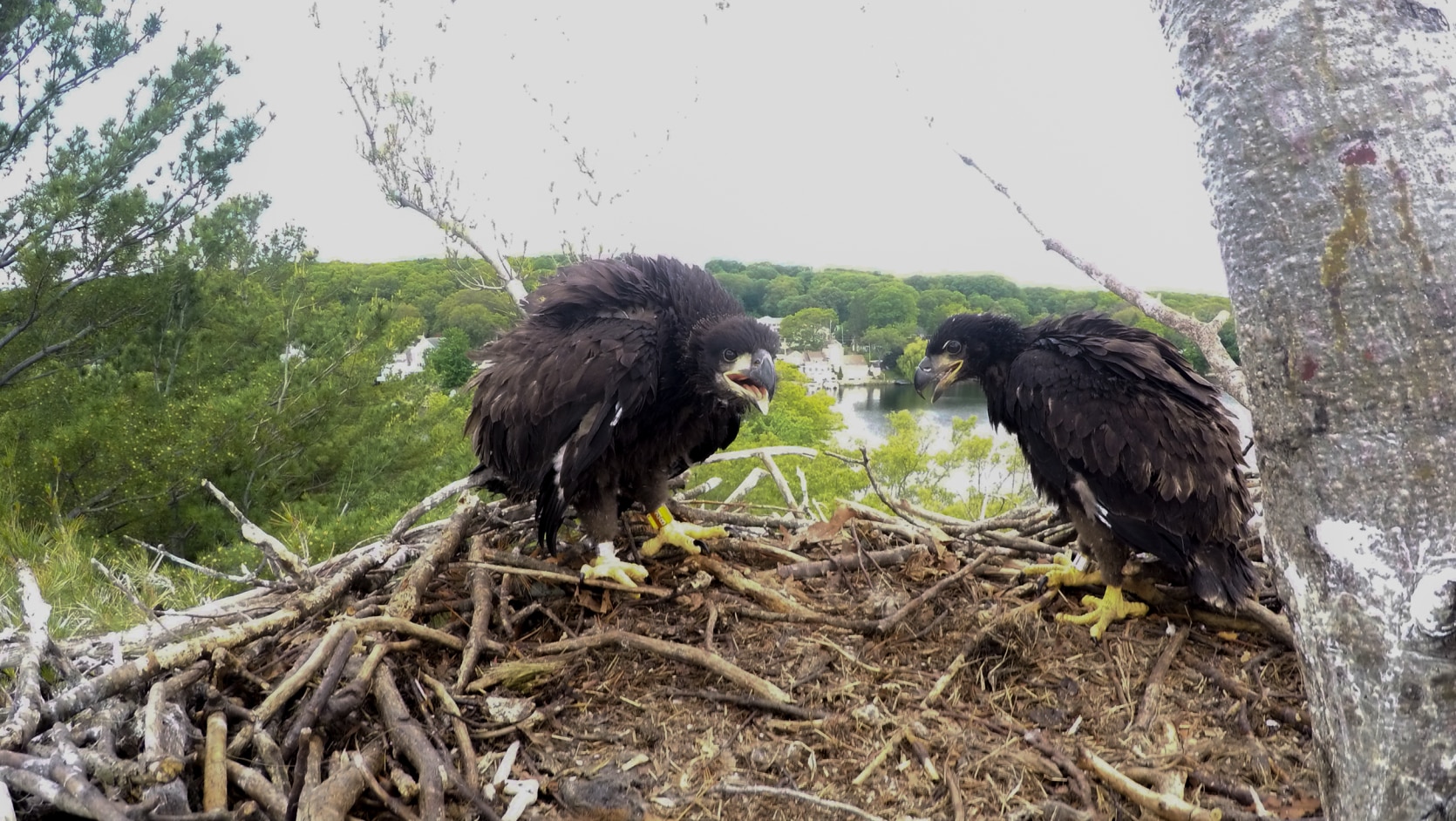- Division of Fisheries and Wildlife
- MassWildlife's Natural Heritage & Endangered Species Program
Media Contact for Bald eagle numbers on the rise!
Marion Larson, MassWildlife

In 2018, MassWildlife staff identified 76 territorial pairs of bald eagles in Massachusetts. This number is up from 68 pairs last year and much higher than the 59 pairs seen in 2016. From these nests, 65 chicks were successfully fledged—hatched and survived to fly—of which 45 were banded with silver federal bands and color-coded state bands.
This number is not all-encompassing of all bald eagle nests in Massachusetts, however. MassWildlife staff encourage you to report any observations of eagles that are suspected or known to have nests in your area. Observations of nests or of adults carrying sticks or nest lining material are of special interest. Please contact State Ornithologist, Andrew Vitz (andrew.vitz@mass.gov) with your observations.
Bald eagles disappeared from Massachusetts as a breeding bird in the early 1900s, with the last suspected nesting effort in 1905 in Sandwich. MassWildlife, along with many other conservation-minded partners, began restoration efforts in 1982, after eagles were discovered wintering in the Quabbin Reservoir area. Young eaglets were transported from wild nests—primarily from Canada—to be raised in cages overlooking the reservoir. When the birds were old enough to fly, the cage doors were opened and the birds were free to fly. This process, called hacking, assures that the young birds would view the area as their home base. It takes five years for an eagle to grow to maturity, and the hope was that the eagles would choose the Quabbin area to nest when grown. This has occurred, and over time, eagle nesting has spread to other parts of the state, involving eagles descended from the original eaglets, and other descendants of hacked birds from nearby states. Since 1982, eagle populations in Massachusetts have undergone a slow but steady increase. The first successfully fledged young (3 birds flying from 2 nests) occurred in 1989. Since that time, the bald eagle population in Massachusetts has undergone a steady increase.
Learn more about bald eagles from MassWildlife!

